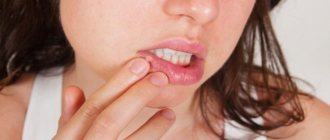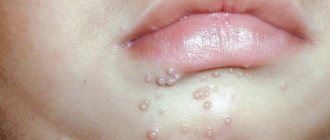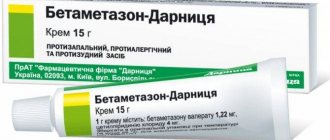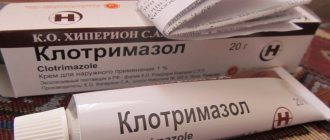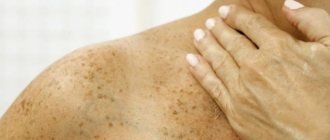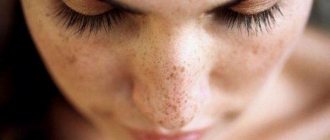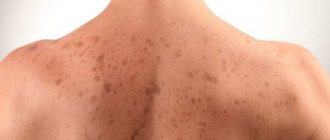White pigment spots are the result of serious problems within the body. The formations are associated with the disease vitiligo. The reason lies in various skin pathologies that cause the cessation of the work of melanocytes - the secretors of melanin - a substance that maintains the same tone of the skin. The name of the disorder is depigmentation.
The disease affects people of all genders, races, and ages. White spotty discharge does not cause painful, itchy sensations. Communication with the outside world is uncomfortable. Self-esteem decreases, stressful situations worsen, and depression begins.
It is recommended to avoid prolonged exposure to direct sunlight. White spots are more pronounced on tanned skin.
What is vitiligo
Vitiligo is a chronic disease characterized by the appearance of skin discharge. White pigment spots on the body are the result of insufficient melanin.
Risk factor: men and women under twenty-six years of age. Scientists have not identified an official theory for the occurrence of pathology.
Vitiligo does not cause symptoms other than cosmetic problems. After the appearance of a new discharge, light scratching of the damaged area, comparable to insect bites, is acceptable.
| Symptoms | Internal processes | External Processes |
| Primary manifestation | The white area contains melanocytes that lose their functional properties. | Arms, legs, face are covered with the first spots. Appearance time: one hundred and twenty minutes. |
| Change in skin tone around the damaged area | Functional cells of the epidermis restore pigmentation, forming an inflammatory process. | Darkening of adjacent areas of the epidermis. |
| Growth of age spots | Infection of neighboring epidermal cells. | Acceleration of the process of vitiligo. Draining stains. |
| Globalization of vitiligo | The formation of spotty discharge is everywhere. The exception is the feet and palms. Areas of skin do not produce melanin. | The affected area is bending, wounded parts of the body. |
| Damage to hair follicles in damaged areas | Loss of bulb function. | Hair bleaching |
| Mesh formation | Small, closely spaced spots. | The affected area is the reproductive organs, hips. |
External and internal problems of the body that cause vitiligo:
- abnormal functioning of the digestive system;
- weak unprotected immune system;
- disruption of endocrine system processes caused by false messages from the pituitary gland;
- metabolic disorders;
- diseases of the endocrine system of internal secretion;
- stress load on the nervous system;
- prolonged daily sunbathing, causing severe tanning and burns;
- mechanical damage to skeletal bones;
- rehabilitation of diseases caused by infection;
- Excess of metals, toxins, phenol;
- Genetic predisposition.
| Therapy | PUVA therapy | Melagenin | Hormonal ointment |
| Property | Psoralen is an integral part of drugs. Stains are removed with ultraviolet rays. | Restoration of melanocyte functions. Creation of new cells. | Protopic and Elidel help treat the disease. |
Lichen simplex - the cause of pigmentation
Risk zone: children, teenagers. The historical origin of lichen simplex is unknown. The fungi are inactive and the disease often goes away on its own.
Treatment is necessary despite the safety of the disease.
The origin of lichen simplex is unknown. The theories put forward are refuted by obvious facts. The probable cause of the spread is a fungus found in human skin. Diseases that provoke the spread of fungal formations:
- dermatitis caused by an allergic reaction;
- severe bronchial diseases;
- skin pathology transmitted from parents;
- fever.
Children aged from one to seventeen years old suffer from the spread of shingles disease. Appearance is the only symptom of the disease. In most cases, lichen goes away on its own.
Brown spots become inflamed in winter and peel in summer. It is recommended to see a doctor to prevent a more serious skin condition.
Pityriasis alba
Pityriasis alba (Pityriasis alba) is a type of eczema that causes a splintered, oval patch of discolored white skin to appear. This skin disorder affects about 5 percent of children worldwide, primarily between the ages of 3 and 16 years.
The exact cause of this pathology is unknown. The disease is usually observed according to the type of manifestations of atopic dermatitis. It may be due to sun exposure or yeast that causes hypopigmentation. Pityriasis alba often clears itself within a few months, although the discoloration can last up to three years.
If you experience symptoms, apply moisturizer to any dry patches and use a corticosteroid such as hydrocortisone, which has an anti-inflammatory, anti-allergic effect and relieves any itching or redness. Read about other types of lichen on this page.
What is leucoderma
Leukoderma (syphilis) is the second stage of the sexually transmitted disease syphilis. It occurs in women who have been struggling with the disease for a long time. Considered a nervous disorder. The affected area is the neck, not far from the parietal and temporal areas of the skull. Spots may appear on the shoulders and back.
The first symptoms develop two months after infection with syphilis. The stains may remain for many years. The symptoms are as follows.
1) The pigmentation disorder spreads throughout the body except the feet and palms. Spot color: pink, white, red, yellow. Symptoms of a cold are possible: fever, weakness, feeling hot and cold.
2) Hair loss and loss of most of the hair follicles.
3) Spread of the disease to the control of the vocal cords. Heaviness in the voice.
4) The spots are not subject to inflammatory processes and surface peeling.
Idiopathic hypomelanosis
Idiopathic hypomelanosis is expressed in the appearance of white spots. The size does not exceed five millimeters. The skin has a normal appearance and structure. It is necessary to follow the treatment rules to prevent peeling.
The risk zone is women over forty years old with light hair. Affected areas are the upper parts of the body.
“Idiopathic” is translated as “unknown.” The cause of the occurrence has no scientific evidence.
Mechanism of development and forms of skin depigmentation
Due to skin pigmentation disorders, white spots appear on any part of the body. This occurs due to the loss of the special pigment melanin by cells, which is responsible for coloring the skin, hair and eyes. It also performs a number of important functions:
protection from harmful ultraviolet radiation;
- neutralization of free radicals;
- acceleration of chemical and biological reactions in the body;
- relief from stress;
- providing adaptogenic functions;
- transport function;
- neutralization of pathogenic processes in the thyroid gland, liver, adrenal glands and hypothalamus.
But for one reason or another, melanin may not be produced or produced in too small quantities. Then colorless areas appear in the form of white spots on the skin (sometimes hair or eyes). Most often they are localized on the face, neck, back, abdomen; pigment spots also often appear on the arms and legs (especially between the fingers).
What pathologies lead to the appearance of white spots on the skin of the human body? The most common of them:
- Pityriasis (multi-colored) lichen. This is an infectious skin disease of fungal origin that is chronic. White spots appear at the beginning of the disease, then their color may change. Most often they appear on the back, neck, armpits, and chest area; they are sharply defined and limited to healthy skin; they can become scaly and peel off. When spots appear, there is no pain syndrome; local inflammation of the lymph nodes (peripheral lymphadenitis) necessarily occurs. In cold weather, such spots darken, but when ultraviolet rays appear, they become discolored again. Treatment of the disease involves the use of antifungal ointments.
Pigmentation - a white spot on the abdomen. Causes and treatment
Local changes in the skin can have different causes. White spots on the skin can be both pathological and physiological. Treatment is selected individually. A preliminary diagnosis is carried out. The doctor collects anamnesis. After this, the doctor gives a direction for further research.
This is the only way to determine the true cause of the violation. A dermatologist deals with skin changes. Each group has separate symptoms and etiology of development. The most dangerous disorders are those that have internal prerequisites for development. Probable causes also include abuse of solariums. Most often, damage to the integrity of the skin leads to disruption.
The treatment approach directly depends on the cause of the disorder. Only a doctor can find out why the skin color has changed after a comprehensive diagnosis. Depigmented areas occur in people when using aggressive household chemicals. People with hypersensitivity to chemicals are more likely to have a reaction. If white spots appear on the body due to internal reasons, treatment is required. It is necessary to eliminate the underlying disease. White areas on the body are a symptom of the underlying disease.
The internal factor acts as a trigger mechanism for the disorder. White formations most often occur on the neck, chest, arms and head. These areas have a delicate and thin epidermis. Less commonly, the disease is localized in other areas.
At first small formations are present. They will increase as the disease progresses. The risk group for epidermal defects includes people with reduced immunity, children and pregnant women. Before figuring out how to treat a defect, you need to determine the cause. Typically, skin formation is one of the symptoms of ongoing diseases. Each of the ailments has a separate set of symptomatic manifestations. It is almost impossible to independently determine the true cause of the disease.
Pityriasis versicolor is the most commonly diagnosed diagnosis. Another name is lichen versicolor. A white spot on the back is the main sign. The number of rashes increases. The formations spread to other parts of the body. New growths are white and scaly. The shape is round, oval or cylindrical. The boundaries of the formations are clear. Additionally, the person has itching. There is an enlargement of the lymph nodes. Pityriasis rosea is not contagious. This is the result of viral diseases.
White and pink formations appear on the body. There are small light dots around them. The causative agent of the disease is a fungal infection. The treatment is complex. White spots on the skin of the legs and arms - vitiligo. Have clear boundaries. Vitiligo occurs as a result of autoimmune disorders. Symptoms appear in years. The disorder is hereditary. White spots on the skin of the arms and torso are the result of delayed melanin formation.
It is laid down at the genetic level. Activation of the disease occurs after exposure to ultraviolet radiation. Treatment is difficult. There is no single scheme. Therapy is aimed at combating skin manifestations. This is a benign skin formation.
May be congenital or acquired. There is no need to figure out how to treat the formation. These are ordinary moles with a deficiency of pigment. All moles can degenerate into malignant formations. It is necessary to monitor their condition. The development of cancer is indicated by the growth of a mole. A white spot on the face may be a fungal infection. The affected areas rise above the epidermis.
The surface begins to actively peel off. Lumpy areas appear. There is a risk of ulcers. On the feet, the disease thins the skin. When it appears on the head, the hair becomes dull and lifeless. The most common fungal diseases are briefly described in the table. Red and white spots appear on the body. Additionally, follicles and nodules appear. The inflamed area is covered with scales.
There is pronounced peeling. The lesions merge. Affects exposed skin. The disease is transmitted through household objects. There is peeling on the skin. Fungal diseases also include seborrheic dermatitis, candidiasis and nail fungus. Almost all disorders are contagious.
Requires urgent treatment. All personal hygiene products will need to be sanitized to prevent the spread of the disease. Leprosy is a chronic infection. Affects skin and internal organs.
White spots on the skin of the hands and body are different in size. The outlines are clear. Infection can occur through airborne droplets. There is also a risk of intrauterine infection. Lumps and plaques may occur. The spots merge. Treatment requires consultation with highly specialized specialists. Syphilis affects the entire body, including the skin. White spots on the skin of the legs and torso lead to enlarged lymph nodes.
The main method of transmission of the disease is sexual. The patient's body temperature rises. There is weakness and malaise. Without treatment, the disease progresses.
Spots on the stomach can appear for various reasons.
What is vitiligo?
But the most common disease that is accompanied by white pigment spots on the body is vitiligo. This is the most mysterious pathology, since the true causes of its occurrence are not reliably known.
Causes of pathology
Until recently, it was believed that it was caused by a viral or bacterial infection. Pathogenic microorganisms, penetrating inside the human body, secrete special substances that destroy the melanin pigment.
But modern medicine, after numerous studies, has come to the conclusion that vitiligo is an autoimmune condition, as a result of which the body perceives its cells as foreign and contributes to their destruction. Why is this happening? The following causes of the disease are identified:
Hormonal disorders. They often occur:
- during pregnancy;
- during menopause in women over 50 years of age;
- due to long-term use of hormonal drugs (for example, oral contraceptives);
- in adolescents during puberty.
after abortion;
Also, some endocrine diseases (pathologies of the thyroid gland, adrenal glands, pituitary gland, gonads) can lead to hormonal dysfunctions.
Poisoning with chemicals and certain medications.
Causes and possible diseases
Melanin is a coloring pigment responsible for the color of human skin. A change in its amount can lead to the formation of depigmented and hypopigmented spots on the body. There are also a number of diseases that provoke the appearance of colorless formations on the human skin.
Vitiligo
Brightly defined, often symmetrical white spots on the skin are a sign of a disease called vitiligo. Most often, they occur in more than one area, with the area around the eyes, mouth, ears, elbows, knees, and groin area being predominantly affected.
- severe/prolonged stress;
- autoimmune causes;
- disorders of the autonomic nervous system;
- mental trauma;
- lack of tyrosinase;
- medications.
Also, the conditions that influence the pattern of vitiligo occurrence include gender and age. So the disease occurs more often in women; as for age, the most likely period is from 10 to 30 years. Various violations of the integrity of the skin can also affect it, for example, systematic friction against the folds of clothing, squeezing, etc.
In addition to the white spots themselves, other accompanying signs are observed, namely:
- the skin in this area reacts worse to thermal changes and other irritants;
- disturbances occur in the process of sweat and sebum secretion;
- Not only the surface of the skin is lightened, but also the hair located on it.
This disease causes significant discomfort, primarily aesthetic. White spots on the skin appear especially intensely after tanning, when the contrast becomes more obvious.
Subsequently, disturbances in the functioning of the thyroid gland are also observed in people with this disease. It would be incorrect to attribute the disorders that arise as a result of these disorders directly to complications of vitiligo.
Diagnosis and treatment
If white or pink spots appear on the skin, you should consult an experienced dermatologist. Since they can have a different nature of origin (from fungal to syphilitic lesions). Different diseases should be treated differently. Diagnostics is carried out in several stages:
Inspection. It is carried out by a dermatologist who will examine the shape, color and location of the spots.
After determining what pathology provoked the appearance of skin depigmentation, appropriate therapy is prescribed. Since most often white spots occur due to vitiligo, let’s take a closer look at the methods of treating it.
In medical practice, treatment of vitiligo is a rather difficult process, since the disease is not fully understood. The main methods for getting rid of white pigment spots on the skin:
Photochemotherapy. With this method, irradiation of the affected skin with long-wave ultraviolet rays is combined with the use of drugs that increase its sensitivity to such rays (Ammifurin, Beroxan, Melagenin). These products are taken orally in the form of tablets or applied to the affected skin (ointment, alcohol solution). It is necessary to undergo several such courses of therapy. But it has a number of contraindications:
- age (not for children under 6 years of age and elderly people over 60 years of age);
- the presence of tumors and cysts;
- During pregnancy and breastfeeding;
- diseases of the heart, blood, gastrointestinal tract and genitourinary system;
- This method of treatment is also not recommended for patients who have increased sensitivity to ultraviolet rays.
- Helium-neon laser treatment. This method is quite safe and has virtually no contraindications.
Surgery. This method involves removing the affected skin and transplanting donor skin in its place.
- vitamin and mineral complexes (taking vitamins C, PP, B, zinc, copper, iron);
- corticosteroids (stop the process of depigmentation);
- immunomodulators (Immunal), which help strengthen the body's protective properties.
Additionally, a number of medications are prescribed as adjuvant therapy. Among them:
It is also recommended to improve the quality of nutrition and a healthy lifestyle, which helps improve immunity. It would be useful to get rid of stress and treat concomitant diseases.
The appearance of white pigment spots can be caused by various pathologies. Therefore, before starting treatment, it is necessary to establish the nature of their origin and the cause of their occurrence. To do this, you should seek help from an experienced doctor who specializes in skin diseases.
White spots are a cosmetic, medical problem.
They arise due to a violation of skin pigmentation and indicate disruptions in the body. If they appear, you should immediately consult a doctor.
The site provides reference information. Adequate diagnosis and treatment of the disease is possible under the supervision of a conscientious doctor. Any medications have contraindications. Consultation with a specialist is required, as well as detailed study of the instructions! Here you can make an appointment with a doctor.
Where do white spots on the skin come from, and why is pigmentation disrupted?
Hello, we don't know you, please log in or register. Asks: Andrey, Novosibirsk. Hello, tell me what these spots are on my stomach, I haven’t noticed before whether the others were there or not, but one of them has definitely been there for half a year!
What could it be? And how to treat? What to apply? Or is this due to some kind of problem in the body? Category: Dermatologist. Added: April 26th. Related and recommended questions Spots on her stomach that look like chickenpox My daughter started seeing spots on her stomach yesterday Brown and white spot For a very long time now, she has had brown spots on her body, they are not solid, but Pink spots on her stomach Doctor!
A week ago I noticed spots on my stomach, photo attached Strange spots on the body, how to remove I began to notice strange spots on the body, they don’t work at all White spots on my daughter’s stomach My daughter is 2. Brown spots appeared Six months ago, several round brown spots appeared on the shoulder White spot on the skin A child with birth, two spots on the back - 1 dark in diameter Spots on the stomach, do not itch, spread Some red spots appeared on the father Spots on the body, for a long time About 3 months ago a small spot appeared on the chest, Spots on the body do not itch A week ago on the stomach and spots began to appear on the chest, now Large red spots and itching. On January 14, the child complained of severe pain in the abdomen. The skin on the feet and between the toes is in high humidity. For more than a year, there are marks between the toes. A spot and thickening of the skin on the ankle. I have had this problem for a long time.
On my ankle, White spots on my legs Alina Viktorovna I have a white spot on my leg on my shin somehow Pigmented white spots on my body I am 37 years old, my name is Inna. I ask you to help, dear fellows. The appearance of spots on the face and hand. While in Armenia in winter, such spots began to appear. Raspberry flaky spots on the face. I have raspberry flaky spots on my face.
The appearance of spots on the body. Burning and itching A few days ago I noticed a small, barely pink pityriasis versicolor on my stomach. The doctor diagnosed me with pityriasis rosea and said that it would go away on its own. Rash after solarium After visiting the solarium, rashes appeared on my chest, shoulders and also do not forget to thank the doctors. Bakalets Alina Viktorovna dermatologist Hello, Andrey! Please add high-quality close-up photographs in good lighting in forward projection. To help you, you need to see!
Andrey How many such spots are there? Are there similar white spots on other areas of your skin? Didn't the tick bite you? Are there any problems with the thyroid gland?
In the photo these are all the spots that are on other parts of the body, no, I didn’t bite the tick, I don’t know about the thyroid gland! And is it treatable? Skin pattern — — — preserved in the lesions? According to the photo, there are two options: - vitiligo, or - lichen sclerosus.
Difficult to treat. I didn’t understand about the skin pattern, I can take a closer photo so you can see! Isn't it contagious? And how and with what to treat? Can it continue to spread throughout the body? Unfortunately, it can. Visually more data for vitiligo Elokom Ointment - - - apply a thin layer to the spots every evening for up to 3 weeks.
You can take zinc preparations Zincteral orally - - - according to the instructions - 1 month Check the functioning of the thyroid gland: Ultrasound and thyroid-stimulating hormone If you have any questions, write! The cycle, that is, repeated treatment with Elok - Elidel - Elok - Elidel, etc. Search the site. What should I do if I have a similar but different question? If you did not find the information you need among the answers to this question, or your problem is slightly different from the one presented, try asking an additional question to the doctor on the same page, if it is on the topic of the main question.
You can also ask a new question, and after a while our doctors will answer it. It's free. You can also search for the information you need in similar questions on this page or through the site search page. We will be very grateful if you recommend us to your friends on social networks. Medical portal 03online. Here you get answers from real practitioners in your field. Currently, on the site you can get advice in 50 areas: allergist, anesthesiologist-resuscitator, venereologist, gastroenterologist, hematologist, geneticist, gynecologist, homeopath, dermatologist, pediatric gynecologist, pediatric neurologist, pediatric urologist, pediatric surgeon, pediatric endocrinologist, nutritionist, immunologist a , infectious disease specialist, cardiologist, cosmetologist, speech therapist, ENT specialist, mammologist, medical lawyer, narcologist, neurologist, neurosurgeon, nephrologist, nutritionist, oncologist, oncourologist, orthopedic traumatologist, ophthalmologist, pediatrician, plastic surgeon, proctologist, psychiatrist , psychologist, pulmonologist, rheumatologist , radiologist, sexologist-andrologist, dentist, trichologist, urologist, pharmacist, herbalist, phlebologist, surgeon, endocrinologist.
We respond to Stay tuned and stay healthy!
WATCH THE VIDEO ON THE TOPIC: White spots on the skin: why do they appear?
Reasons for appearance
The formation of white spots on the skin occurs due to skin discoloration as a result of decreased melanin production. The reasons for this phenomenon are internal and external.
Internal ones include:
- Diseases of the liver, kidneys, digestive organs;
- Malfunctions of the endocrine system;
- Pituitary dysfunction;
- Immune disorders;
- Infectious diseases;
- Unstable psycho-emotional state;
- Pregnancy;
- Hormonal imbalance.
External factors are:
- Damage to the skin as a result of mechanical damage;
- The body's reaction to chemically active household chemicals and synthetic materials;
- Exposure to ultraviolet rays;
- Heredity;
- Working with chemicals and toxic substances.
White spots on the skin may appear due to a small amount of melanin in the cells.
Pigmentation can appear on any part of the body and often signals health problems. The spots have different shapes and sizes and are often observed on the arms, neck, and shoulders.
They do not cause significant discomfort, that is, there is no itching, burning, irritation or pain, but they will cause nervous disorders, especially in women who are too concerned about their appearance.
Their appearance does not depend on:
Medicine is still unable to establish the exact manifestation of this condition, but according to assumptions, it will be:
- Failures in the immune system;
- Genetic abnormalities;
- Early gray hair.
Fungal infections
If the white spots on the skin itch, the dermatologist will first of all suspect the development of a chronic skin disease - pityriasis versicolor. This is a fungal disease caused by a pathogen of the genus Malassezia, a yeast fungus. Developing on the skin, fungi produce azelaic acid, which blocks the formation of melanin in the body.
As a result of this effect, round and oval-shaped spots form on the skin, as shown in the photo. As the disease progresses, the spots become larger, spreading to the back, arms, legs and other parts of the body. If the white spots on the legs are itchy, this means that the mycelium has loosened the epidermis, leading to peeling and itching.
Pityriasis versicolor should be treated with local antifungal agents. Before applying the medicine to the white spots, doctors advise treating the affected area with a special shampoo containing selenium sulfide. Typically, the course of therapy takes from 10 to 14 days. If after this period the symptoms do not go away, you need to consult a doctor to adjust the treatment.
Ringworm rosea
In this case, white spots that do not itch or peel are formed after a viral illness. Doctors believe that the causative agent of the disease is the herpes virus. At the first stage of development, plaques form on the natural folds of the arms and legs, from which screenings spread throughout the body. A white-pink spot appears at the screening site.
Pityriasis rosea on the skin
Dermatologists say that with proper treatment, pityriasis rosea completely disappears after one and a half to two months. But provided that the therapy includes:
- Glucocorticosteroid ointments.
- Chatterboxes.
- Antibiotics.
- Antihistamines.
- Vitamins.
- Calcium.
Vitiligo
This is a common cause of white spots on the skin. Doctors have not fully studied this disease. But it is known that the body, under the influence of improper functioning of the immune system, begins to interfere with the production of melanin. As a result, white spots appear on the arms, legs, and back, which do not peel or itch. Vitiligo disease has no cure. However, scientists have developed a number of medications that stop the progression of the disease and resume, albeit in small quantities, the production of melanin.
In children
If white spots on a child’s body itch in the first months of life, most likely the baby has suffered a severe form of an infectious disease. Why exactly hypomelanosis forms is not clear. However, doctors say that in addition to white spots on the skin, the child has developmental delays and damage to the central nervous system. This disease can be treated with the help of retinoids - potent drugs.
Vitiligo in a child
Just like in adults, in children white spots on the skin can be caused by fungal infections. If white spots with a red center form on your baby’s body, or spots on the hands itch, you need to visit a dermatologist. Remember that similar symptoms cannot be treated with medications alone. Only a doctor identifies the disease and prescribes treatment.
In custody
If light spots appear on your body that itch and peel, you should consult a dermatologist. After undergoing the necessary diagnostic procedures, the exact cause of this phenomenon can be determined. Often, white spots on the skin are the result of stressful situations in which modern people live almost constantly. But even in this case, appropriate treatment is required.
White spots on the skin appear for a variety of reasons. They usually do not cause physical discomfort.
They can be caused by a number of diseases, injuries, or the sun. There are several treatment options.
Occurs after sunbathing
As a result of active exposure of the skin to sunlight, white spots may appear on its surface. They can form both as a result of natural tanning and after visiting a solarium.
The main reasons for their appearance are:
- Sunburn;
- Fungal infections;
- Effect of drugs;
- Skin reaction to ultraviolet radiation after cosmetic procedures;
- Pregnancy;
- Pressure on the skin.
The method of treating white spots due to tanning depends on the causes of their occurrence.
If they appear, you should consult a doctor who will prescribe the appropriate course of medications.
If discolored areas appear on the body after sunbathing due to a fungus, then antifungal drugs, ointments and creams are prescribed.
If white spots form on the body after a sunburn, you need to speed up the process of restoring the skin with the help of aloe and seaweed extract.
Damaged areas of the skin can be treated with vitamin A and E. Until the depigmentation disappears, the skin must be protected from ultraviolet radiation.
To avoid this situation, you need to remember the following precautions:
- Stay in the open sun for no more than 30 minutes;
- Use high-quality sunscreen;
- Drinking fluids before going to the beach;
- Proper nutrition;
- Skin moisturizing.
Cases when white spots are not the result of diseases and are not dangerous to health
The cause of the change in skin color in these cases is external factors, and not infections or pathological processes.
After trauma to the skin, for some time this area will be much lighter than the surrounding skin tissue. This is due to the fact that during healing, a crust forms on the wound, and under it the skin is isolated from exposure to ultraviolet rays. This layer of skin does not accumulate melanin in sufficient quantities.
If you get a burn after sunbathing on the beach or visiting a tanning salon, you will notice that there are light areas under the exfoliation of dead skin. Over time, fair skin will return to its normal color. If the burn was severe or chemical in nature (especially after an unsuccessful phenol peel), the white spots may remain forever.
After visiting a horizontal solarium, some areas of the body tan unevenly and remain pale or completely white (mainly the protruding areas of the pelvic bones and shoulder blades).
These cases require mandatory medical intervention and observation, as they pose a serious health risk.
We invite you to read: The skin around the mouth is peeling and red: reasons, what to do?
Albinism
If a person is born with a small number of melanocytes (skin cells that produce dark pigment), then the skin remains unprotected from sunlight. Such transformations in the skin remain forever.
Treatment: There is no effective treatment. It is recommended not to stay in the sun for a long time, use photoprotective (protects from solar radiation) products, and decorative cosmetics.
Tuberous sclerosis
It is a hereditary disease in which small plaques and tumors appear on the skin, other organs and even in the brain.
Treatment: There is no treatment that will completely eliminate this disease. Anticonvulsant therapy and surgical treatment are used.
Immune leucoderma
Vitiligo
This is an autoimmune skin disease that leads to the destruction of melanocytes (cells responsible for skin pigmentation). On the hands, knees and on the skin of the face, milky or pink spots appear, which can gradually increase in size and merge with each other.
The skin does not peel off, but the hair in this area begins to discolor. The disease is typical for people of all ages. The root cause of this disease is not fully known, but a number of factors can be identified that increase the risk of its occurrence: infections, endocrine disorders, stress.
Treatment: Since the exact pathology has not been established, the treatment process often does not give the desired results.
The most common methods of treatment are: taking medications that affect the sensitivity of the skin to UV rays (Vitaskin gel; Beroxan); exposure to UV rays; PUVA therapy; completing a course of corticosteroid hormones (For example: Prednisolone ointment, Momat, Hydrocortisone 1% ointment, Advantan);
Halo nevus (birthmark)
The disease is expressed by a red or brown nodule surrounded by a halo of white skin. Mostly such nodules appear in the torso and arms. And often they disappear on their own.
Treatment: Over time, the nevus may shrink and disappear completely. A nevus in itself is not dangerous, but a large number of them on the body may indicate autoimmune diseases (vitiligo, celiac disease, thyroiditis) and even the development of melanoma cancer.
Sometimes white spots remain as a result of rashes after a number of diseases (eczema, inflammatory processes, lupus, psoriasis, burns). It occurs due to the fact that the skin remains covered with crusts and scales for a long time. And the sun's rays do not fall on it.
Treatment: Treatment of the underlying disease.
Pityriasis alba
Flaky spots with unclear contours. It is typical mainly for children and appears in the cheeks, shoulders and lateral thighs. Appears in the summer (mainly after sunbathing). After some time they disappear on their own.
Treatment: The spots themselves do not need treatment, you need to treat the skin disease that caused the lichen. You need to wash with warm (not hot) water without soap, use moisturizers, Pimecrolimus (Elidel), Taclolimus (Protopic) or Calcitriol ointments.
Versicolor/pityriasis versicolor
The disease is caused by fungal infections. The enzymes they produce lead to the cessation of melanin production and damage to the skin. Initially, the spots are pink. Then gradually the skin begins to peel off and lose color. Spots appear mainly on the shoulders, chest, upper back, and head (under the hair). The disease is accompanied by itching, but can sometimes be asymptomatic.
Treatment: It is recommended to use topical antifungal agents (for example: Exoderil or an alcohol solution of iodine) in addition to oral medications (for example: Rumikoz).
It is a chronic infectious disease caused by the microbacteria Mycobacterium leprae and Mycobacterium lepromatosis. The first sign of the disease is white or dark spots with loss of skin sensitivity. Next, compaction occurs and large skin folds form.
Treatment: includes specific anti-leprosy drugs, stimulating drugs (vitamins, immunoglobulins, immunomodulators).
Syphilis
It is a serious infectious disease. Transmitted sexually. When illuminated from the side, small white spots (no more than a centimeter) located on the neck, back and torso, arms and lower back, and stomach are clearly visible. This is the main symptom of secondary syphilis. The spots do not cause physical discomfort and may remain for several years.
Treatment: It is necessary to treat the disease itself by a venereologist using antibiotics (“Doxycycline”, “Penicillin G”, “Erythromycin”, “Ceftriaxone”), immunomodulators (“Pyrogenal”, “Dekaris”, Activin”), restorative and physiotherapeutic procedures (inductothermy, magnetic therapy, laser therapy). There is no point in trying to cure the spots themselves.
Spots are caused by exposure to chemicals directly on the skin or from chemicals entering the body. Occurs in people who work with chemicals such as arsenic, hydroquinone monobenzyl ether, mercaptoethylamines, chloroquine, hydroxychloroquine, and corticosteroids.
Treatment: Eliminate contact with harmful chemicals that affect skin pigmentation.
It is considered a side effect after using medications (“Psoriasin”, “Chrysarobin”). For example: steroid use causes dry skin and spots, furatsilin can cause white spots.
Treatment: Avoid the use of drugs that cause leukoderma.
Other diseases
Avitaminosis
A lack of vitamins D, E and B12 can cause discoloration of the skin, peeling, and the appearance of white specks on the nails. All these symptoms indicate a deficiency of calcium, zinc and other important trace elements.
Treatment: Take a blood test: based on it, the doctor will determine what exactly your body needs and will correctly adjust your diet. However, keep in mind that the appearance of white spots is only one of the manifestations of vitamin deficiency.
Basal cell carcinoma.
The appearance of a light-colored spot with raised edges may be a consequence of basal cell carcinoma. The spot appears spontaneously and gradually increases. Sometimes the formation has a bluish color or the appearance of a yellow scar with blood vessels.
Treatment: Professional oncological care.
Squamous cell carcinoma
He is more aggressive in his manifestations. The patch is white or pinkish with a drier, rougher texture.
Poikiloderma
The skin looks very variegated, as reticular pigmentation appears on it with dilated vessels, atrophied parts, and white scaly spots. These manifestations are consequences of the following diseases: skin lymphoma, congenital dyskeratosis, connective tissue diseases.
Treatment: Treatment of the original disease followed by correction of skin defects with peeling (superficial, mechanical or deep peeling) or laser.
Lupoid tuberculosis of the skin
After healing of tuberculous tubercles, a white spot (atrophic scar) remains. The skin tissue in this place gathers into folds. Appears mainly on the face, neck, under the hair on the head, and feet. The disease can begin in childhood or adolescence and last for years.
Treatment: Treatment in clinics under the supervision of a phthisiatrician.
Anemic nevus
This is a local spasm of blood vessels that nourish the skin. As a result, bloodless areas are formed that look like light spots of incomprehensible shape. There is no itching, the spots do not peel off, but they may increase in size.
Treatment: There is no effective treatment, the spots can be simply removed, but scars will remain. You can partially mask the spots with ointment (For example: “Vitilemna”, “Vitasan”, “Melanin ointment”, “Vitix”, whitening creams) or cosmetics (foundation cream, cosmetic powder).
Pigmentless nevus
If there is still hair on the white area of the skin and there is no peeling, then the stain is not dangerous to health. However, it can develop into melanoma with serious consequences. Protect this area from constant mechanical impact in every possible way.
Treatment: Mandatory visit to a dermatologist and oncologist.
Hypomelanosis in children
If a child suffers a serious illness in the first months of his life, this can cause a disruption in the production of melanin and the appearance of white spots with a clear outline.
Treatment: The stains themselves are easily removed with special peeling procedures and do not pose any risk. However, hypomelanosis sometimes affects not only the skin, but also the nervous system. And causes a delay in the development of the child. A mandatory comprehensive examination is required.
How to treat these spots
The course of treatment for white spots is prescribed by the doctor individually, taking into account the causes of the disease and associated factors.
Complex treatment consists of:
- Drug treatment;
- Use of ointments and creams for skin care;
- Radiation therapy;
- Proper nutrition;
- Compliance with personal hygiene rules;
- Skin grafts;
- Bleaching.
Radical methods include photochemotherapy (PUVA). This is the activation of melanin production under the influence of ultraviolet rays, while simultaneously taking medications that increase skin sensitivity. To achieve results you need to take 3-4 courses.
To get rid of white spots on the skin faster, laser therapy is used.
The laser only affects damaged areas with a higher power of UV rays. The method can cure neoplasms and spots that have existed for several years.
In cases where traditional treatment methods are ineffective, healthy epidermis is transplanted to damaged areas.
The patient is prescribed a course of vitamins and medications that strengthen the immune system and stimulate the formation of pigment cells.
Whitening is carried out if the skin tone is predominantly light. To do this, chemicals are used that destroy melanocytes. As a result, the skin acquires an even shade throughout the body.
How to get rid of white spots on skin?
This article will answer the question “How to eliminate white spots on the skin.” Why do they appear and how to get rid of them. White spots disfigure the appearance even more than brown pigmented formations. The face reflects the processes occurring in the body, and an experienced doctor can identify the problem in the body by looking at spots and pimples on the skin and prescribe the right solution.
Clusters of white spots on the face and body appear due to a lack of melanin in certain areas of the epidermis. This pigment provides protection to skin cells from sunburn. Those fragments of the epidermis where melanin is absent are exposed to the harmful effects of ultraviolet radiation. If the skin is completely white, then the person is called an albino.
Causes of white pigmentation
The causes of white spots lie in both hidden processes in the body and external factors. Depending on the cause, you can find a way to get rid of them.
- A fungal disease in which the cells become discolored. This disease is called sun fungus. White streaks appear on the skin.
- Vitiligo – the balance of melanin is disturbed. This occurs for various reasons - poisoning with toxic substances, diseases, nervous breakdowns, hereditary factors, hormonal imbalance.
Sometimes such white marks remain after wounds and burns.
- Zhiber's lichen is a disease in which pink or white islands of skin appear on the neck, face, and arms.
- Cosmetic damage to the skin becomes visible with prolonged sunbathing, a weakened immune system, and thyroid disease.
- Particularly sensitive skin reacts to synthetic clothing, contact with chemicals, and contaminated water. Most often, a patient with vitiligo is covered with white spots. Tight clothing can cause a cessation of the production of coloring pigment in certain areas of the epidermis.
- After treatment with antibiotics and other drugs, the dermis may become more sensitive to sunlight. When tanning, you can get not a chocolate tan, but a scattering of white spots.
Precautions for Vitiligo Patients
If a person has a tendency to form white spots, it is necessary to minimize the time spent in the sun; after bathing in salty springs, the salt from the body must be immediately washed off.
When in the sun, the skin must be lubricated with a cream with a high degree of ultraviolet protection.
Do not allow your skin to dry out, or be exposed to the wind or near an air conditioner. Well-humidified air is beneficial for such people.
Methods for getting rid of white spots
There are several ways to treat white spots on the face, but only a cosmetologist can choose them. For example, treatment in a beauty salon.
- Salon methods provide quick results, but they are expensive and are not suitable for every skin type. The traditional method of getting rid of spots is phototherapy, used for dark-skinned patients. The course of treatment is long, 2-3 months.
- Laser therapy is harsh on the epidermis, but helps get rid of the problem. If the procedure is carried out incorrectly, as well as neglecting the recommendations of a specialist during the rehabilitation period, unsightly marks and even burns can result.
- Skin grafting is a last resort for removing white spots.
- Artificial skin whitening is a painful procedure in which all skin cells are brought to the color of a white area. Melanin in healthy cells is destroyed. A last resort, practically never used.
Home remedies
Medicines from a folk medicine cabinet do not act as quickly as salon manipulations.
But they are harmless for:
- Anise oil helps get rid of stains. Pour the vegetable component with warm vegetable oil and put it in a dark place to infuse. This oil is used as a face mask daily.
- Sometimes even changing your diet can help eliminate vitiligo and other serious skin diseases. For the health of the epidermis, it is important to strengthen overall health and maintain the balance of vitamins and microelements - iron, copper and zinc.
The consumption of the listed vitamins and missing components is replenished from spinach, stingray liver, buckwheat, and lentils.
In order to get rid of vitiligo, the following procedures are most often used:
- exposure to ultraviolet rays;
- take melatonin on the surface of the skin and melatonin orally;
- human placental extract combined with calcium chloride in alcohol, this is how vitiligo is modernly treated.
Stains from lichen are removed with the help of ointments Clotrimazole, Lamisil, Mifungar. It is important not to miss the white spots, lubricate them with ointments so that the spots do not grow.
Skin cells begin to produce melanin if you use herbal preparations from ammonia, duckweed, St. John's wort, and parsnip. From these herbs, fresh or dry, decoctions and infusions are made, which are taken orally and applied to the affected areas.
The skin acquires a natural color if you lubricate it with a solution of steamed nettle, chamomile, and sage. To do this, you need to take an equal amount of these herbs and make a rich infusion.
Maria Shishankova
Source: https://gialuron.com/pigmentaciya/kak-izbavitsya-ot-belyx-pyaten-na-kozhe.html
Getting rid of spots on the body at home
Folk methods for activating melanin production include the use of natural photosensitizers: duckweed, St. John's wort, ammi, parsnip. A prepared decoction based on them can be taken orally and treated damaged areas of the epidermis.
To treat white spots on the body, you can use a drug that contains chamomile, nettle, plantain, and sage. The components must be combined and filled with boiling water. The decoction must be infused for at least 20 minutes and lubricated on the skin 3 times a day.
To prepare the ointment at home, you will need aspirin, Vaseline or rich baby cream. The components of the product should be thoroughly mixed until a homogeneous mass is obtained.
To disguise bleached spots on the body at home, you can use rhubarb juice. It is applied to the spots 2 times a day. A tincture of walnut leaves in alcohol is also suitable.
How to remove: treatment of pathology
A smooth or white scaly patch on the skin should be treated under the supervision of a doctor, who will select the optimal therapeutic measures for a particular case. These include:
The cause of white spots on the body can be any, therefore it is better to select therapy under the supervision of a doctor.
- medications that allow you to regenerate the composition and structure of the skin;
- adherence to the principles of proper nutrition, which determine the quality and speed of therapy;
- PUVA therapy;
- physiotherapeutic methods that help restore skin pigmentation and treat the outer layer;
- skin grafting, this measure is resorted to when the skin has died and there is no possibility of its independent restoration;
- cosmetics (ointment, shampoo, cream and others) that remove flaking of the skin and nourish it with vitamins;
- traditional medicine methods in the form of recipes and compresses, which, in combination with medications, help remove pathology and saturate the affected part of the skin with nutrients.
If white spots are detected (regardless of whether they are small or large), you should visit a doctor as soon as possible to identify the causes of this disorder. Timely treatment eliminates the disease and eliminates complications that can be caused by skin depigmentation. You should not treat this problem negligently and self-medicate. This attitude will only make the situation worse.
White pigmented skin defects
The formation of white pigment spots indicates a malfunction in the body, as a result of which melanin ceases to be produced.
The main causes of white pigment spots on the body are:
- Fungal infection. The most common is lichen.
- Dysfunction of internal organs and systems. Diseases of the liver, gastrointestinal tract, endocrine system, hormonal imbalances, weakened immunity.
- Occupational diseases. Occurs due to systematic contact with toxic substances.
- Pregnancy. During this period, hormonal changes occur in a woman’s body, which lead to the appearance of age spots.
- Unstable psychological state. Nervous stress, chronic fatigue, and lack of sleep lead to a decrease in the body’s protective functions and, as a result, the appearance of pigment spots on the body.
If characteristic spots appear on the body, you must consult a doctor who will determine the cause of their occurrence and prescribe a course of radiation. These will be antifungal drugs, ointments, laser therapy, whitening, PUVA therapy.
Traditional methods based on herbs are also widely used: St. John's wort, parsnips, strawberries, figs. You need to adhere to a balanced diet and a healthy lifestyle.
Treatment of white spots with folk remedies
In order for melanocytes to begin to be produced again, natural remedies are used - plant photosensitizers. The most famous of them:
- ammi large;
- small duckweed;
- St. John's wort;
- parsnip.
Note: Make decoctions and tinctures from these plants, take them orally and apply to affected areas of the skin. At the same time, the affected areas are exposed to erythematic doses of ultraviolet light to activate melanin.
The most popular and simple herbal infusion recipe to solve this problem is as follows:
- Take chamomile, nettle, plantain and sage leaves in equal quantities.
- Mix;
- Pour boiling water and let sit for 20 minutes until a saturated solution is obtained.
Note: Take the resulting decoction 3 times a day and lubricate the stains with it.
For external treatment of white spots, you can also use special herbal-based products, which you will find in the pharmacy:
- “Vitix”;
- “Vitasan”;
- “Vitilem.”
Small spots appeared
As a result of exposure to a fungal infection, pityriasis versicolor, on the surface of the skin, groups of small white spots begin to appear. The fungus actively affects the lymphatic system and leads to its inflammation.
Pigmentation has clear boundaries. Under the influence of sub-zero temperatures, such spots acquire a dark shade, become covered with scales, and itching occurs.
To treat fungal infections, complex methods are used, which are prescribed by a doctor. They consist of observing strict rules of personal hygiene, taking antifungal medications, ointments and creams for external use.
>

